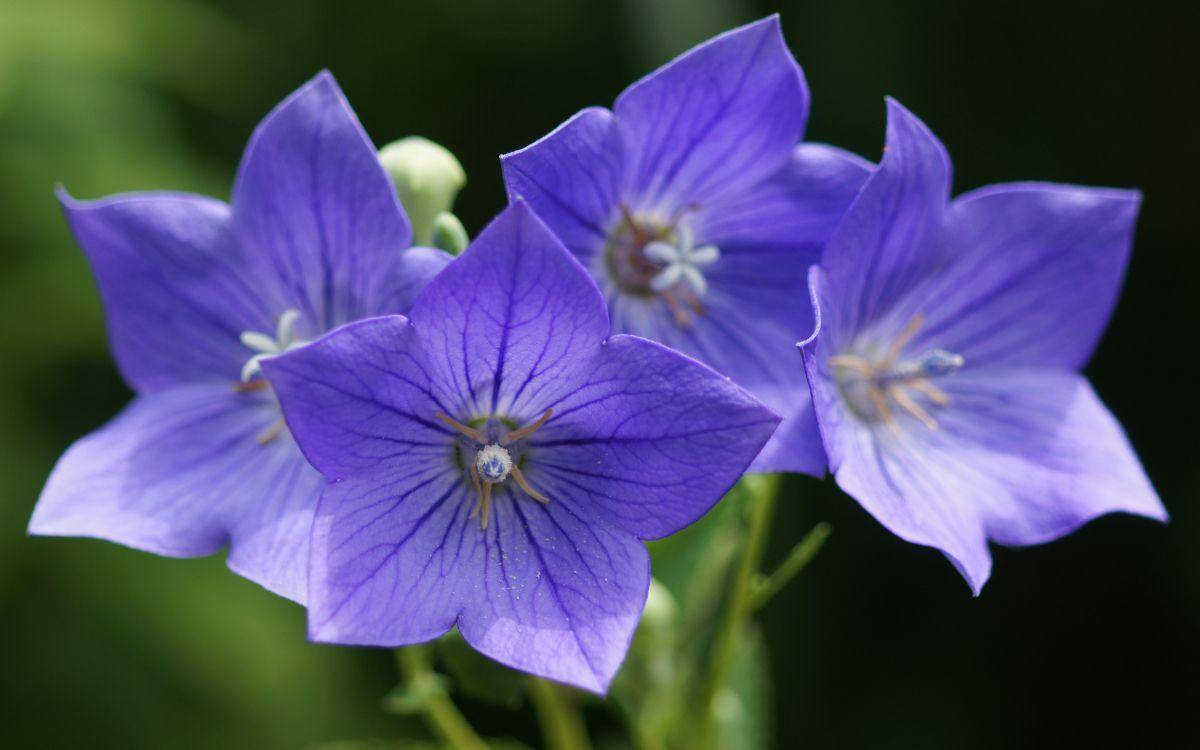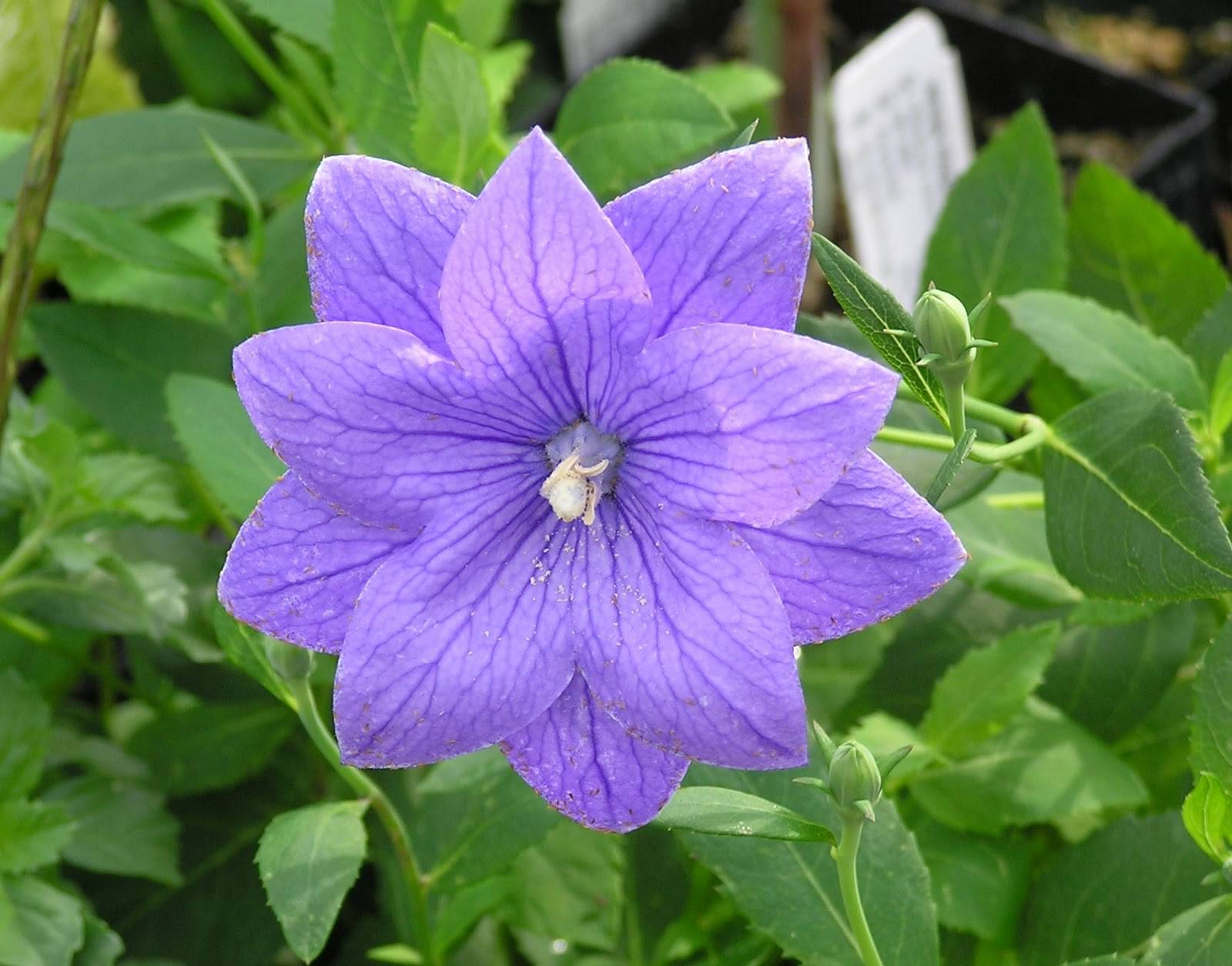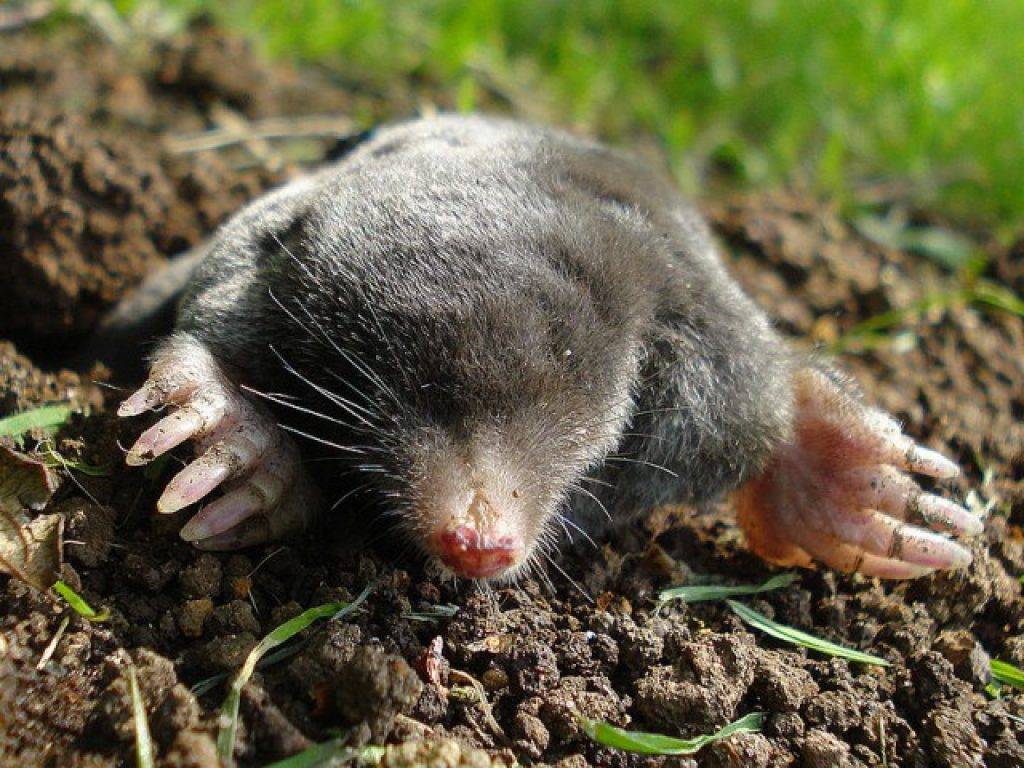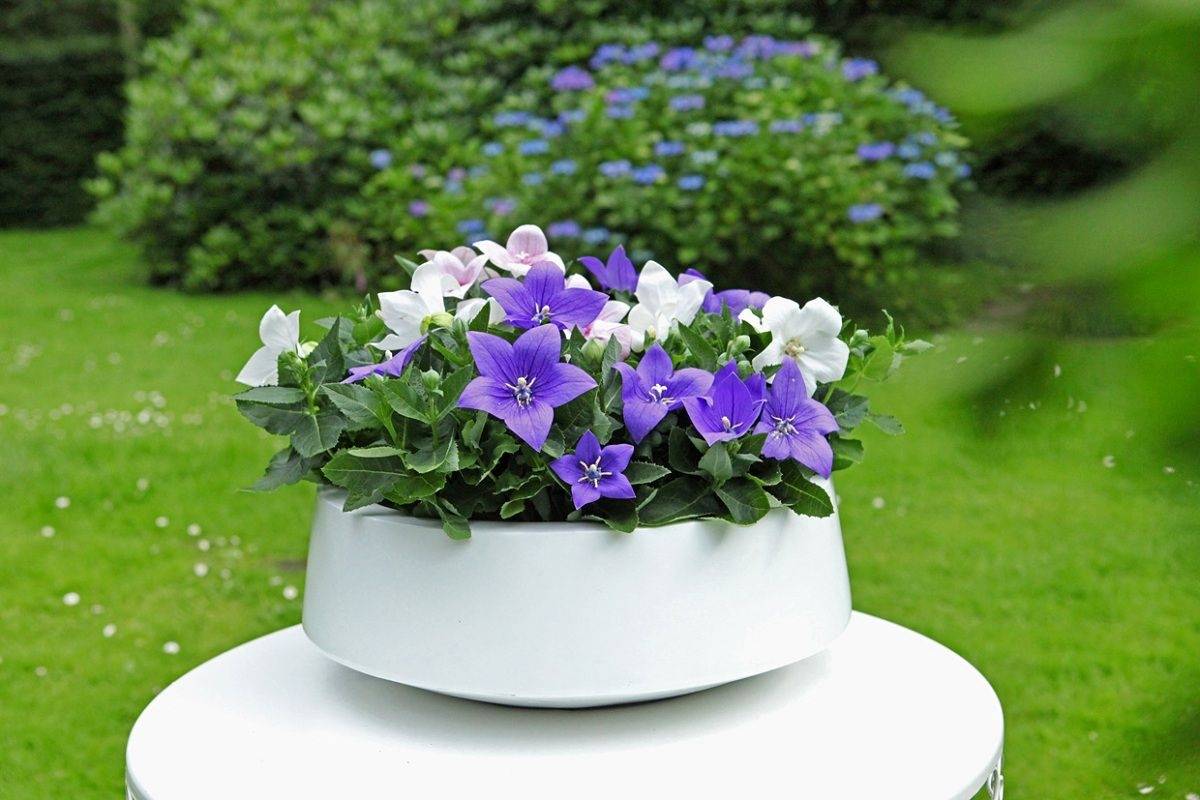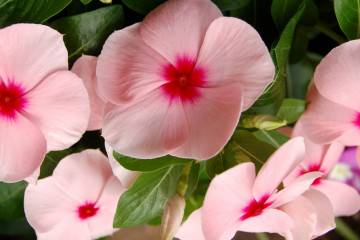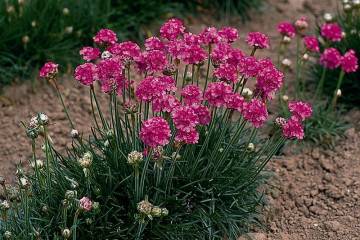Platycodon flower - varieties, planting and care
Content:
Platycodon is a flower that belongs to the category of unusual. It is also popularly called a shirokolokolchik. It belongs to perennial plants. It can be found naturally in the Far East. It is widely used to create compositions in gardens.
Flower characteristics
The platycodon bell belongs to the Kolokolchikov family. It can be found not only in Russia, but also in Korea, China, Japan. The plant gained particular popularity in the XX century.
If the flower is properly grown, then it reaches a height of 1.2 m. The rhizome is represented by a large bulb. The leaves are elongated. Flowers can reach a length of 8 cm. They are collected in inflorescences or grow singly.
During the selection, many varieties have been bred, each of which has a unique set of characteristics. For example, Album reaches a height of 60 cm, and the flowers are blue with dark veins.
Codo Double White features large snow-white bells. It got its name because the flowers grow in two. The plant grows to a height of 70 cm. Double White is suitable both for single cultivation and as an addition to a flower arrangement.
Shell Pink has one peculiarity - the bells are light pink with crimson veins. This combination gives the flower a special tenderness.
Lovers of dwarf varieties can pay attention to Mariessey Blue. Its height does not exceed 35 cm, and the flowers are blue with a lavender tint. Aoyama grows even smaller, no more than 20 cm.
Hakone White is spherical. Average height, 50 cm. Flowers of double color - white and blue. This combination looks very unusual. Terry inflorescences are rare, so these varieties are highly prized.
Varietal variety allows you to choose the Platycodon variety for any garden. The plant looks good both in mono compositions and in mixed ones.
For example, the platycodon Astra Blue has beautiful blue petals. You can add snow-white or lilac specimens to it. The variety looks especially impressive next to lilac flowers.
Landing
You can plant a flower on the site in two ways - by seeds and seedlings. Each of them has its own characteristics.
Seeds
Large-flowered platycodon is planted in February-March. Previously, the seeds are soaked in warm water for two days.
The seeds are planted in containers. To do this, use a soil mixture of humus, peat, sand. All components are taken in equal parts. A distance of 3 cm is maintained between plantings. After that, the soil is well watered, covered with film or glass.
The first shoots will appear in about two weeks. The pick is carried out one month after sowing. Any beginner can sow Platycodon in this way.
Seedling
If you do not want to deal with seeds, you can buy already slightly grown plants. Taking care of flowers is easy. The containers are placed in a cool room (no higher than 20 ° C), after which the soil is abundantly watered and loosened.
When the sprout has 4-5 leaves, transplant into separate pots. The diameter of the pot should be 10 cm. Transplanting into open ground is carried out only with the onset of heat, that is, around May.
Seedlings are carefully transferred to a new place. For flowers, it is better to choose a sunny area, but partial shade is also allowed. Broken brick or expanded clay is laid in the holes.
Watering
After planting flowers, you need to create the right conditions for the seedlings. For the first two weeks, they are watered every day. Then the regime is changed and the number of watering is reduced to 1 time in three days.
You need to loosen the soil after each watering. Platycodon flowers need constant oxygen supply. In the process of digging up the soil, weeds can be removed.
Top dressing
Once every two weeks, the plant is fertilized with a complex agent for flowering plants. Before planting, organic fertilizing can be applied to the ground - liquid mullein or diluted bird droppings.
Transfer
Platycodon plant cultivation, which is not subject to everyone, does not require frequent transplants. In one place, the flower grows beautifully for 10 years.
When in indoor conditions, large bells require a little different care. Young specimens are transplanted annually, adults every three years.
Platycodon is a perennial plant, therefore, if it dries quickly, this indicates errors in the content. With a properly organized rest period, the flower will delight the eye with its flowering for a long time.
Some gardeners prefer to grow Platycodon as an annual, but that doesn't make sense.
Pruning
Even in a sunny area, the plant can stretch ugly. Such stems become long and ugly. Therefore, from time to time, the platycodon blue perennial bell is pinched. To do this, remove all ugly parts.
Don't worry about pruning as it will stimulate branching. Before wintering, you must remove the entire aboveground part. The pruning procedure is carried out only with a sterilized pruner, the cut points are sprinkled with charcoal powder.
Pests and diseases
The platycodon flower, planting and caring for which consists of a large number of details, is susceptible to the attack of various diseases. When overflowing, gray rot appears, it manifests itself in the form of characteristic weeping spots.
To get rid of rot, plants are treated with fungicides. If slugs appear on the white platycodon, then it is worth using eggshells or ash, sprinkle the ground with these means. After that, the slugs will not be able to crawl to the flowers.
Strong and severe night frosts can seriously harm the platycodon, so do not rush to land in open ground. If, nevertheless, it was not possible to comply with the disembarkation period, the withered parts are cut off. Perhaps the plant will be able to heal.
Platycodon will bloom only under properly organized living conditions. Lack of top dressing will lead to the fact that the flowers will lag behind in growth. They will have small leaves and few inflorescences.
An excess of moisture leads to decay of the root system. This is due to the lack of a drainage system. A layer of expanded clay or broken brick leads to the fact that excess moisture is not retained. Root decay can be determined by lethargy of leaves and stems. The plant must be carefully dug up and, if the roots are rotten, then the specimen is destroyed. After that, the remaining plants are watered less frequently.
Flowering period
Planting and caring for Platikodon in the open field does not differ much from those of other garden species. During active growth, it is necessary to ensure uniform watering and loosening of the soil.
Additionally, you can huddle plants. For this, mounds of earth are scooped up to the stems. This procedure eliminates the need to weed out the weeds.
Wintering
Platycodon can be an annual flower if desired. In this case, after the flowering period, all plants are dug up and destroyed. But with a properly organized rest period, the bells will bloom next year.
Old shoots must be removed so that the plant can tolerate frosts more easily. From above, the planting is covered with spruce branches, foliage or sand. With this approach, wintering will be easy.
In the spring, new shoots are expected to appear, after which the earth is carefully loosened. In doing so, it is important not to damage the fragile root system. For reproduction, it is better to use harvested seeds.
In indoor conditions, wintering is carried out a little differently. The flower pot is transferred to a cool room (no more than 10 ° C), after which the amount of watering is reduced and the daylight hours are reduced.
Indoors, all varieties tolerate wintering well. The rest period allows the plants to gain strength for a new flowering. Platycodon varieties from seeds or seedlings grow well in a room.
Landscape design
Bells are used to create rockeries, compositions with coniferous or deciduous species. Such combinations allow you to highlight the special beauty and tenderness of flowers.
Large varieties look harmonious in mixed flower beds. They should be planted next to phlox or irises. Can be combined with peonies, daylilies.
Platycodon looks good as a hedge. Bright colors can frame your garden path beautifully. Due to their winter hardiness, bells are planted on alpine hills.
You can also go the other way: plant platycodon in flowerpots or fenced flower beds. Such miniature compositions look no worse than traditional ones. You can plant seven varieties in one container, this will allow you to combine several colors of flowers.
Platycodon are unusual and beautiful bells that attract attention with their size. They require little maintenance and can grow over the years. The varieties are resistant to many pests and diseases. Every gardener can grow such flowers.
